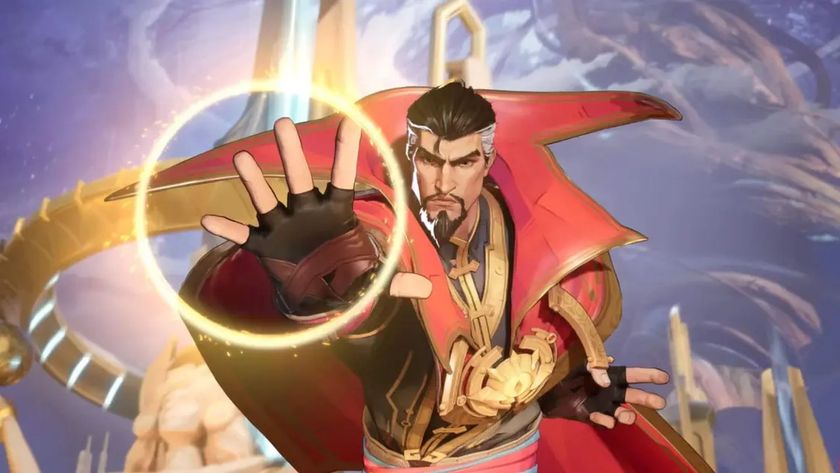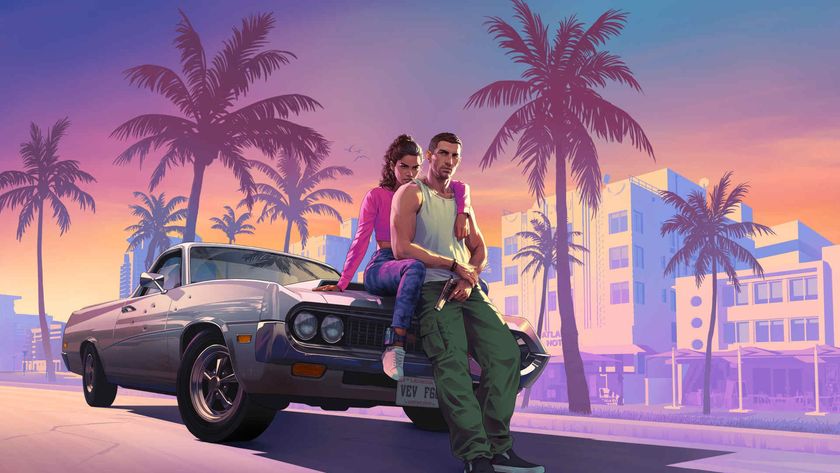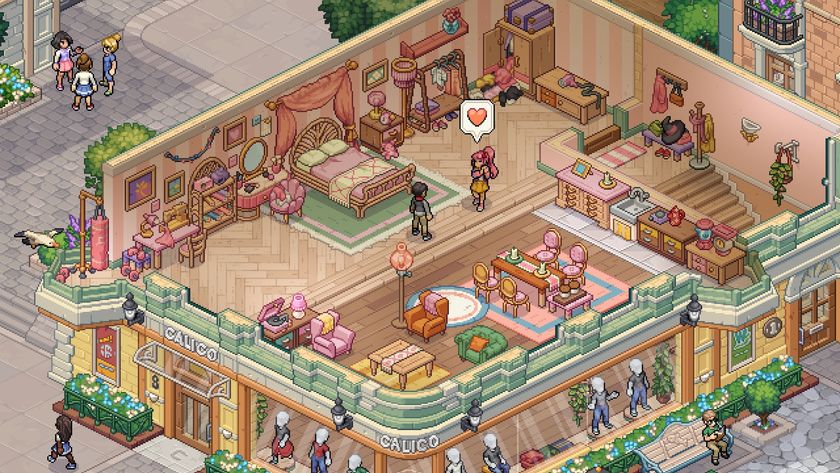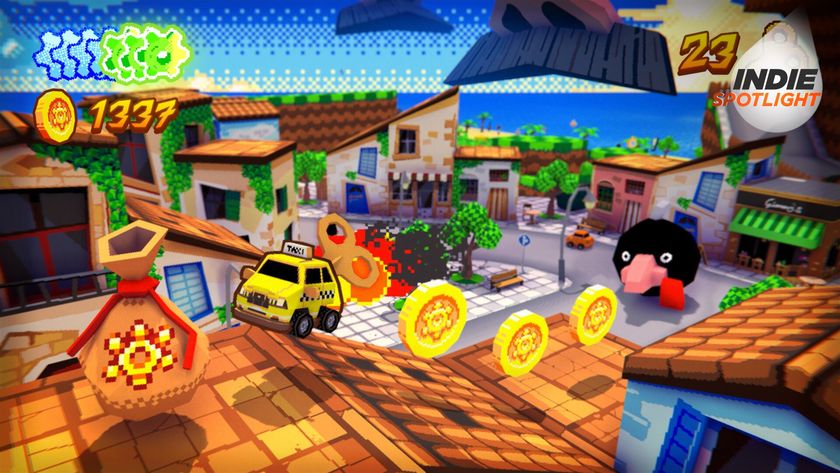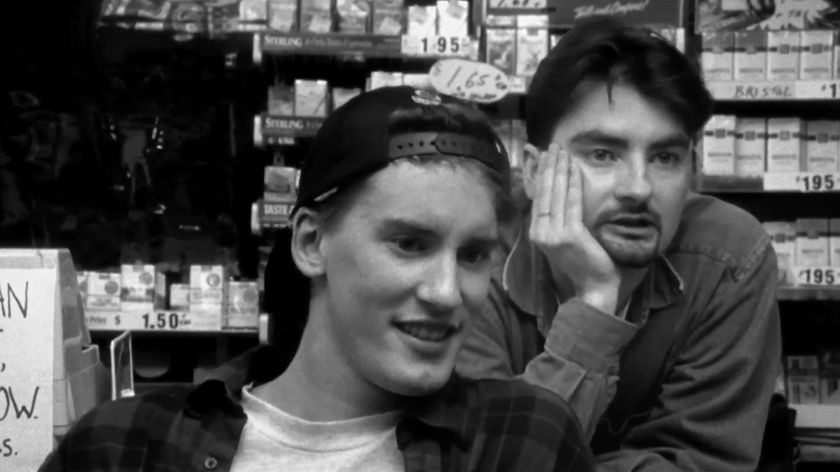"We don't like to follow trends": Digital Extremes on Warframe's five year journey from sleeper hit to industry titan
Official PlayStation Magazine catches up with Digital Extremes to reflect on the studio’s past and future with Warframe
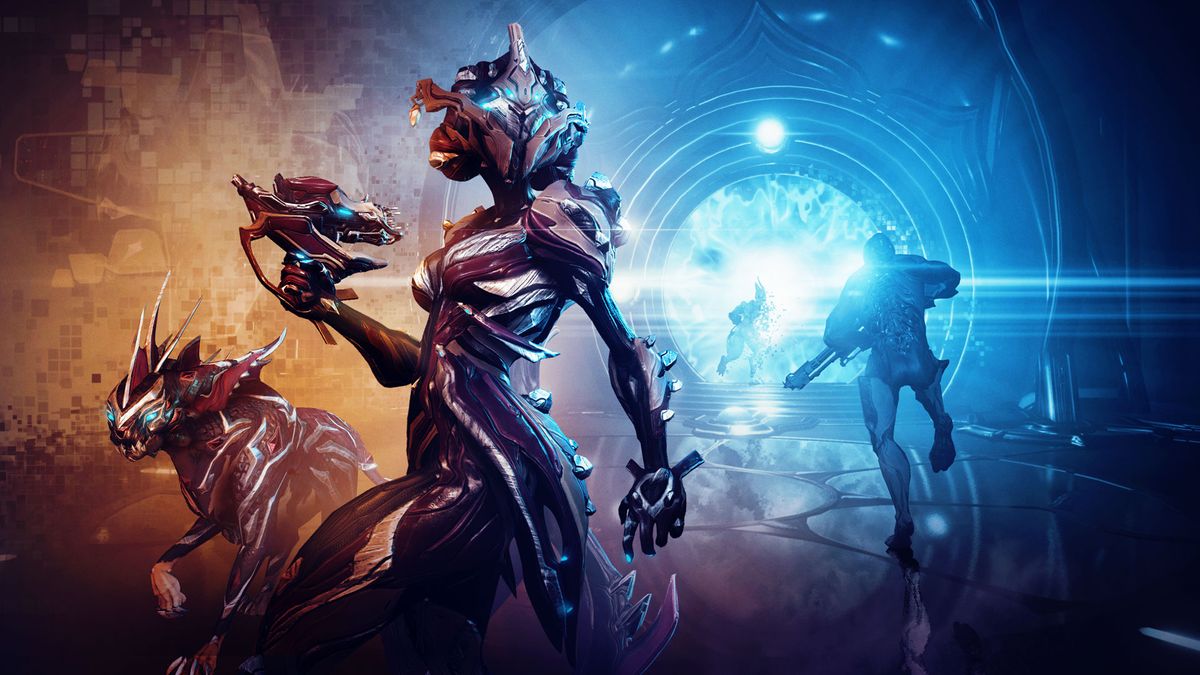
The games industry moves quickly, and it would not be unreasonable to see the year 2013 as a bygone era. By that metric 2008 looks more and more like a lost age. Pat Kudirka, producer at Digital Extremes, rightly states, “The video game industry is a constantly changing universe like no other. This industry moves faster than the TV and movie industries combined.”
In 2008 Digital Extremes released third-person sci-fi shooter Dark Sector for PS3. Kudirka remembers the title, saying: “Dark Sector was the first title I ever worked on, so it holds a special place in my heart,” later joking, “which is possibly a murmur from the amount of coffee and energy drinks consumed during production.”

Subscribe via Print or Digital to OPM for as little as £16 / $9 for a quarterly digital subscription.
The cover-based shooting was par for the course at the time, but what that title really had going for it was three-pronged glaive-based combat and gloriously bloody takedowns. Kudirka gleefully elaborates: “Severing enemy limbs with your glaive while also unloading a full pistol clip into unsuspecting foes – yes please! It’s still one of my favourite mechanics today and lives on in Warframe.”
As it was his first title at the studio, Kudirka remembers its development especially fondly: “We made a lot of crazy decisions a month out from certification, including a giant monster making a cameo smashing his way through almost an entire level, last-minute multiplayer modes and maps, and beyond. Somehow we still managed to make it work – which, oddly enough, is a saying that applies even more to Warframe.
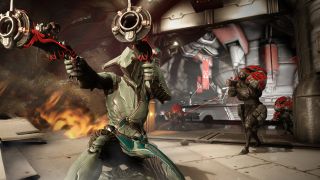
“It was a love project for the studio. A lot of hours were put in from start to finish and all hands were on deck. When I say all hands on deck, I mean all hands on deck. One of my favourite memories was when our CEO James Schmalz was in the trenches with us fixing a variety of bugs, in this case a few broken materials on some art assets.”
The final product was, however, very different to what was originally intended for Dark Sector. That initial idea was finally realised as what Warframe is (still becoming) today. But would the dev ever go back? “I would never want to remake Dark Sector,” Kudirka tells us. “I may be biased, but I think it’s a gem on its own. It’s still a fun title with some classic game mechanics that stand out even today. [...] Warframe is a spiritual successor to Dark Sector.”
“There is so much we’ve been able to implement in Warframe over the past five years without having the fear or constraints of being a box title, so it would be extremely tough to go back to that business model [from a largely work-for-hire studio to switching to the free-to-play model in the studio’s 19th year]. We have a good thing going with Warframe, unlimited creative freedom – with no restraints but our own imagination – and I wouldn’t change that for anything.”
Sign up to the 12DOVE Newsletter
Weekly digests, tales from the communities you love, and more
Sleeper agent
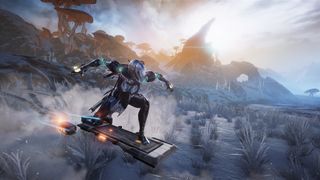
Beginning as a confusing take on ninjas in space upon first release back in 2013, this third-person shooter has since gone from an unruly student to one of the grandmasters of the free-to-play field, at one point being the second most downloaded software after Netflix.
In the early days, as a launch title, Warframe offered only a tiny sliver of the content available now. Digital Extreme’s live ops and community director (as well as friend to all Tenno as the voice of The Lotus), Rebecca Ford, tells us, “We initially launched in closed beta and we offered a slice of a game, with many systems intact, but not a lot of content at first. So, in the beginning, it might have been a tough game to comprehensively review all in one sitting. Actually, it’s probably harder to review it now. It went from small and confusing to massive and Overwhelming!”
Kudirka adds, “We have made so many significant changes over the years but have managed to capture and continue creating the core co-op gameplay magic that makes Warframe special. Countless times we’ve revisited our combat, weapons, parkour/movement system, clans, companions and pets, game modes, UI; the list could go on forever.”
Ford says candidly, “It’s certainly fair to say that some press were lukewarm in the beginning – Warframe has very much become a game of ‘something from nothing.’ If you installed Warframe in its first year of existence, it took a very determined type of gamer to see the potential. Press have an overwhelming amount of games to cover and, frankly, Warframe was a tiny and confusing entity at the time.
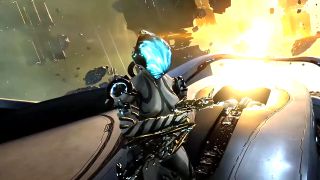
A lot has changed since 2013. Besides now offering a slew of new Warframes and weapons to craft and purchase – Ford tells us, “I think I’m just missing the two latest Prime Weapons” – the game recently saw a sizeable content update in its first open world addition, The Plains Of Eidolon.
Of the expansion, Kudirka says, “Among all of our iterations, from linear corridor shooter to procedurally generating levels, from epic cinematic quests to our current open landscape, The Plains Of Eidolon is our biggest change to date. Going from a game designed around randomly generated tiles (or maps) to an open world landscape is massive in scope and technicalities. Plains Of Eidolon has enabled us to reflect on best practices [going forward].”
"When the community talks, we listen. We're never afraid to bring out the sledgehammer."
Pat Kudirka
“Yes, Plains Of Eidolon was a big moment for Digital Extremes,” Ford agrees. “Plains Of Eidolon captured people’s imaginations on a much broader scale [than] we anticipated and it proved to be the most successful update/expansion ever for Warframe. We were humbled by the feedback and response. It was also, for sure, one of the toughest updates to create due to the fact that we had never created anything like it before. We had to re-code a lot of our proprietary engine (we call it the Evolution Engine) to handle the draw distances, create totally new lighting (because POE has a day/night cycle), add in dynamic weather, and to handle constant activity all in one area. We also had to tie all of the story and quests and the like into a larger world to have it all make sense.”
t’s quite a departure for such a mission-heavy game but, as she assures us when we ask about the possibility of a battle royale mode, Ford says, “As you probably know by now, we don’t really like to follow the trends, we like to make them! So no, no battle royale.” Ford later adds that the cutting room floor is a mess of ideas, from the team and the community. Kudirka elaborates, “The beauty of frequent updates is that we can, and will, change anything we deem necessary. When the community talks, we listen. We’re never afraid to bring out the sledgehammer.”
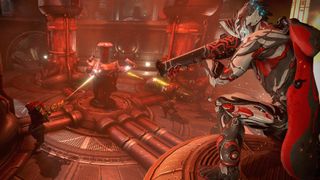
Later he says of the game’s growth, “Free-to-play games have evolved and become better, more powerful experiences, and we would like to think that Warframe has been a part of the maturation process of breaking down people’s biases around the term. You can indeed enjoy a fair free-to-play game, with AAA qualities, constant updates, memorable experiences, and a great community.”
Shoot for the stars
By the time you read this magazine, Digital Extremes will have added a swathe of new content and be gearing up to another open world expansion – Venus. Kudirka tells us, “Everything we have learned, and are still learning, will be on display in Venus – bigger spaces, different activities, new unique characters, and more vehicles.” “We are humble usually, but we set the bar high for ourselves with Plains Of Eidolon, so now we have to outdo ourselves,” Ford explains. “Venus is a lot larger than Plains Of Eidolon, and it focuses on a new colony, Solaris United, being kept in semi-slavery, working in underground manufacturing plants for the Corpus.
The planet itself offers a more rugged terrain, including more peaks and valleys, harsher weather, and a higher ceiling, including a floating asteroid with a village in it [...] Expect to see more pilotable vehicles – flying and drivable ones – and a lot of new enemies, including all sorts and sizes of SpiderBots, and many more surprises besides.”
There are 25 years of experience behind the studio, pushing Warframe from strength to strength, and we’re assured that Digital Extremes has no intentions of slowing down. There isn’t a strict five-year plan, per se, but we’re told that the studio’s hope for that future point is to still be introducing, “more open worlds, more cinematic quests, more Warframes.” Ford goes on to say, “I expect us to pivot, too. Which way? No-one knows right now. We’ll know when we get there.”
This article originally appeared in Official PlayStation Magazine. For more great coverage, subscribe so you never miss an issue.
As PLAY Magazine’s games editor, Jess is known for championing the weird, the wonderful, and the downright janky. A fan of cult classic JRPGs and horror, her rants about Koudelka and Shadow Hearts have held many a captive audience. Outside of writing about all things PlayStation, she’s also a lifelong fan of Nintendo’s handheld consoles. Having whiled away most of her college years playing The World Ends With You on the original Nintendo DS, she’s looking forward to uncovering all of NEO’s secrets too. Beginning her career as Official PlayStation Magazine’s staff writer in 2017, she’s since written for PC Gamer, SFX, Games Master, and Games TM.

